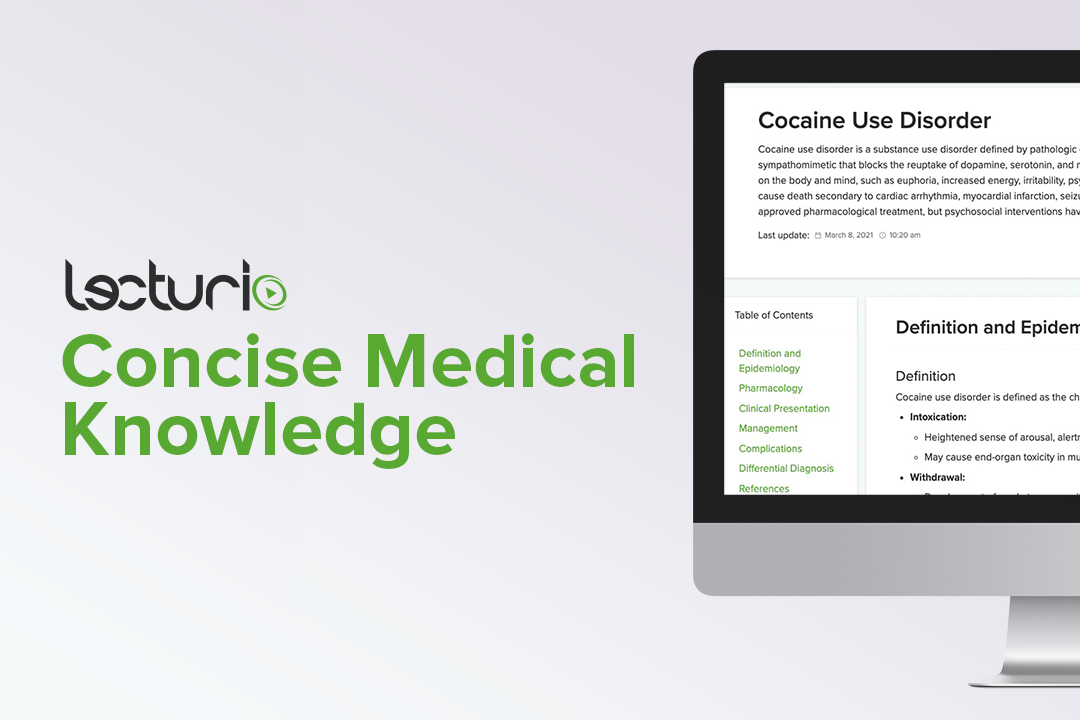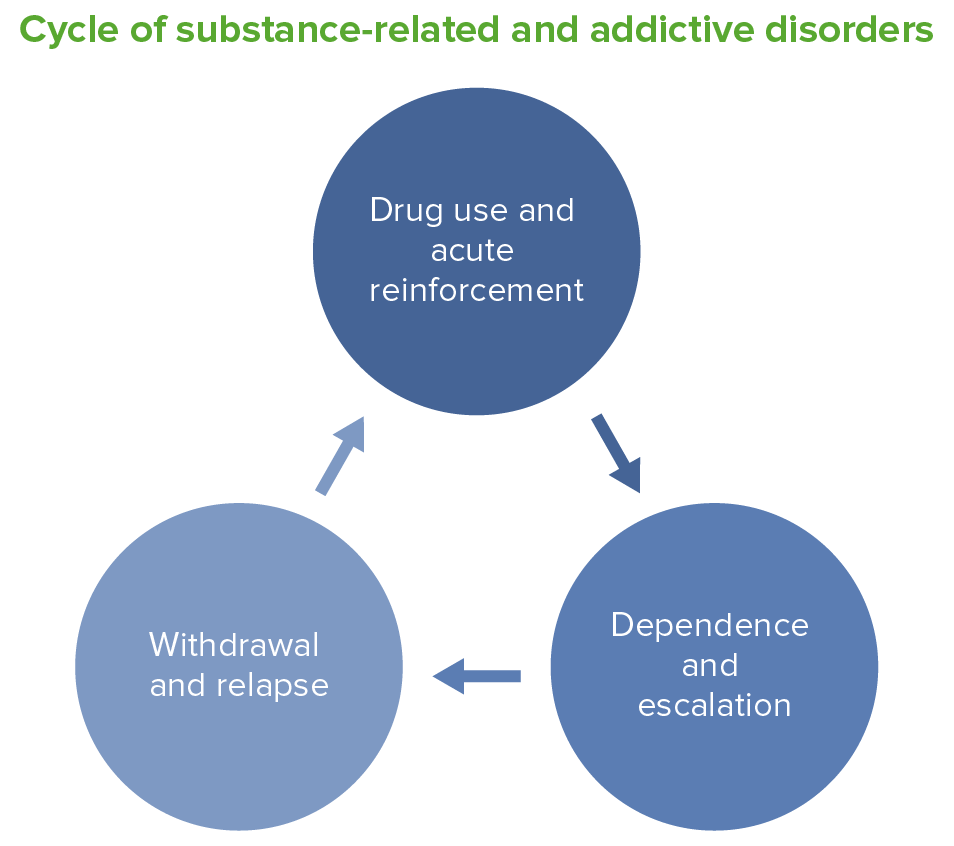Playlist
Show Playlist
Hide Playlist
Cocaine – Drugs of Abuse
-
Slides Cocaine Drugs of Abuse.pdf
-
Reference List Pharmacology.pdf
-
Download Lecture Overview
00:01 Cocaine comes under a lot of names and I'm sure you're very familiar with it already "Blow", "Snow", "Snort", "Super-speed", all kinds of names for cocaine. 00:11 It's an inhibitor of CNS transporters, so, dopamine, norepinepherine and serotonin. 00:16 It is a very short lived kind of product or drug. 00:20 It gives short lived euphoria, short lived self confidence and actually does contribute to some mental alertness, which is why it tends to be a performance enhancer in those people who are in high risk (inaudible) like stock brokers and business people who want to stay awake for a long time. 00:39 Overdoses are very common with cocaine. This can result in psychomotor agitation, encephalopathy, cardiovascular complications, seizures, respiratory depression. 00:49 Now, the reason why cocaine has such a variable effect on people is because it is usually snorted. 00:55 When you snort cocaine, you cause intense vasoconstriction of the blood vessels. 01:00 But in those patients who don't have a lot of vasoconstriction, these people are going to have more toxic effects. 01:06 That's why cocaine is hard to predict in terms of how you will get sick from it. 01:12 Cardiac toxicity is very common. And on more than one occasion, I've had to treat an arrhythmia brought about by cocaine. 01:20 It blocks norepinepherine uptake, so that the norepinepherine is in the synaptic cleft for a very long time, which is why they tend to be very tachycardic, hypertensive and they do have increased cardiac contractile function. 01:34 As I said before, it's a potent vasoconstrictor. This can lead to peripheral hypertension. It can lead to MI's and it can lead to strokes. In terms of cocaine use in pregnancy, there's a significant increase in fetal mortality and morbidity. 01:51 And you'll also get fetal cortical cystic lesions. 01:54 We recently had a patient in my clinic whose child had fetal cortical cystic lesion from maternal cocaine use. 02:01 And it is a lot more common than you think, so make sure you're always asking your patients if they use cocaine. 02:08 Crack cocaine is a variation of cocaine. It's often called "Crack" or "Rock" or "Work" or "Hard" or "Iron", there's a whole bunch of names. This is a picture of crack cocaine. 02:19 It is the most addictive form of cocaine. It is a very short, very intense, and very significant high that they get. 02:28 There is a massive amount of dopamine release with depletion and depression thereafter. 02:33 And its effect are essentially the same as cocaine, but it is much faster acting, where cocaine can take up to 30 seconds to have an effect, crack will act under 8 seconds. It's also far more dangerous. 02:45 So, I mentioned to you before that with cocaine, it's usually snorted. And when it's snorted, you get significant vasoconstriction of the blood vessels in the nose. That limits its absorption. 02:59 With crack, it's inhaled, and it is absorbed by the pulmonary circulation. This allows it to reach the CNS very rapidly. 03:08 "Crack lung" is a common side effect of crack cocaine usage, typically occurring within 48 hours of inhalation use. 03:15 It's characterized with diffuse alveolar damage and hemorrhage. 03:18 And it's often accompanied with fever and cough and often misdiagnosed as a pneumonia. 03:24 Other complications include pneumothorax, pneumomediastinum, as well as pulmonary fibrosis and pulmonary hypertension with chronic use. 03:34 "Crack babies", we sometimes see this in most communities. They often have later cognitive and developmental issues. 03:44 Ekbom's syndrome is a parasitosis with secondary skin damage. 03:49 So, people who take crack cocaine think that their skin is crawling with bugs. So they scratch so hard that they actually damage the skin. And it's a very typical kind of skin rash. 04:00 So, here you can see a person who had been using crack cocaine and scratch themselves, and he has got lesions all over his face. And these two pictures are only three months apart. 04:12 So you can see how toxic and how horrible this particular drug is.
About the Lecture
The lecture Cocaine – Drugs of Abuse by Pravin Shukle, MD is from the course Toxicology. It contains the following chapters:
- Cocaine
- Crack Cocaine
Included Quiz Questions
Which of the following is NOT a neurotransmitter associated with cocaine?
- Acetylcholine
- Dopamine
- Serotonin
- Norepinephrine
Which term describes Ekbom's syndrome?
- Delusional parasitosis
- Proptosis
- Parotiditis
- Lichen planus
- Acne vulgaris
Customer reviews
5,0 of 5 stars
| 5 Stars |
|
5 |
| 4 Stars |
|
0 |
| 3 Stars |
|
0 |
| 2 Stars |
|
0 |
| 1 Star |
|
0 |





